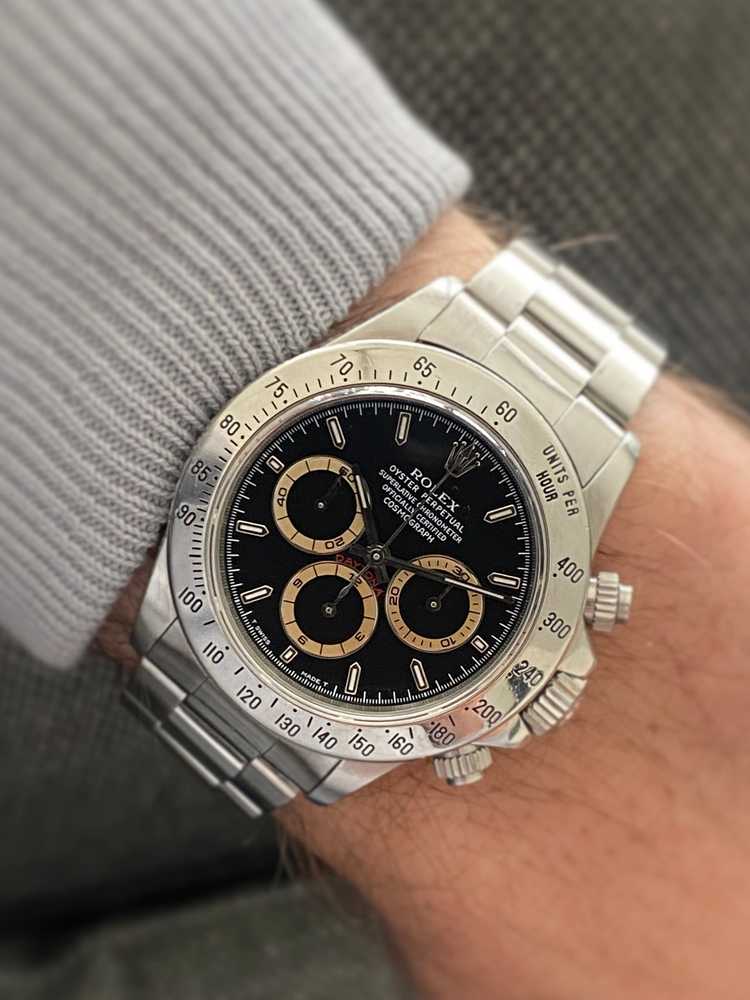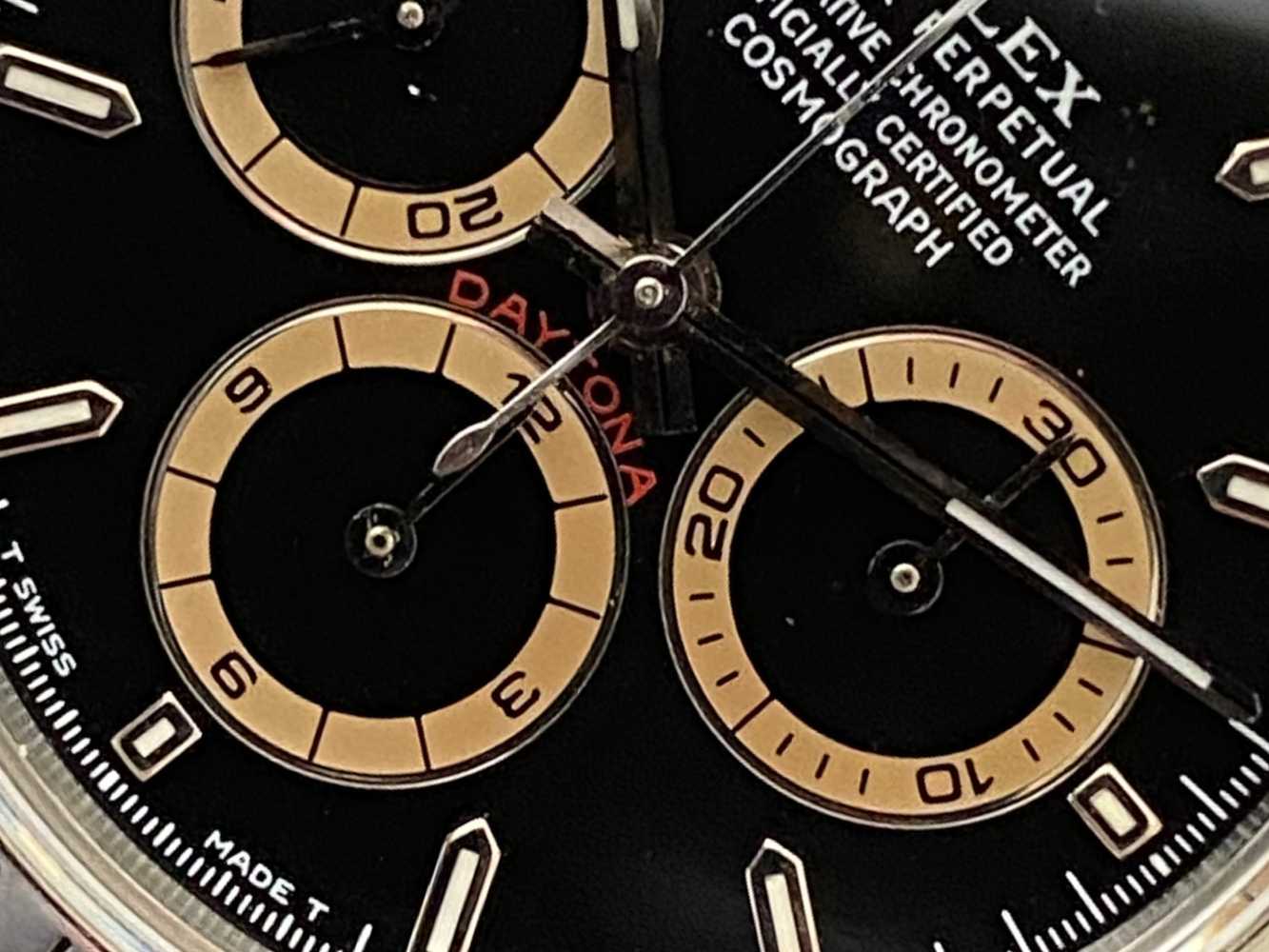
Free Worldwide Insured Shipping on All Orders.
Rolex Daytona "Patrizzi" Dial
A rarity that is loved by many. Let's have a look at Patrizzi dials.
The Rolex Patrizzi Dial
It is a known fact that collectors are looking for something special or unique. Something that is hard to find and quite often very little were made of. Even more so, they might look for something that was crafted to perfection by an artist. However, something strange is seen in the world of vintage watch-collecting. The most sought-after, and thus most valuable, pieces are sometimes not those that are perfect. It is the pieces that have a flaw of some sort that are unique.
We have actually talked about this before, like in our blog post about panna dials (read it here), but sometimes it’s a production error that leads to something special in the long run. With this blog we’d like to focus on another variation of the Daytona: the Patrizzi dial.

Reference 16520
Let’s start with the watch we’re talking about. The five digit reference Daytona from the 90’s, reference 16520. Fitted with a Zenith caliber/movement (caliber 4030) and now one of the most sought after models. In the production run of this watch, which was from roughly 1988 until 2000, several variants were made of the stainless steel model. Now let’s focus on the “mistake” that lead to the so-called Patrizzi dial.
Brown sub-dial tracks
The black dialed Daytona’s that were produced between 1994 and 1995 used an organic varnish/lacquer on the dial (called Zapon). As seen in other Rolex dials that have discoloration (tropical, panna etc) it turned out that over time this varnish did not provide the protection from UV rays it should have. The result? The silver tracks of the sub-dials turning a beautiful warm brown. And as with all these imperfections, which partly makes it even cooler, no-one of them is the same. This is the case because each watch has been exposed to the UV-rays for a different amount of time. So now that we know what a Patrizzi dial is, why do we call it a Patrizzi Dial?

Patrizzi
As with a lot of “inventions” or “discoveries” it is often the case that the name of the person who first found it is linked to the thing. In this case is was Osvaldo Patrizzi whose name was linked to the watch. Patrizzi was the founder of Antiquorum (one of the leading auction houses in the watch industry) as well as a watchmaker. He personally owned one of the black dial 16520 Zenith Daytona’s and decided to sell it in an auction (amongst many other of his watches). The sub-dials had already turned a beautiful brown and this is when people started calling this watch the Patrizzi dial.
